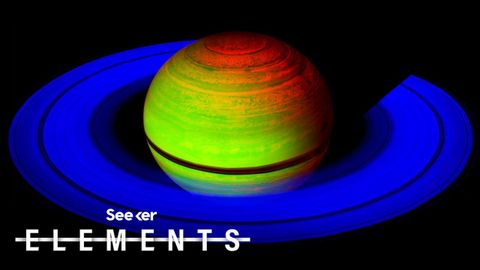土星の巨大な六角形の嵐の謎はすぐに解決されるかもしれない (The Mystery of Saturn’s Giant Hexagonal Storm May Soon Be Solved)
Summer が 2020 年 10 月 16 日 に投稿  この条件に一致する単語はありません
この条件に一致する単語はありません- v.t./i.進化させる;展開する;進化する;変遷する
- adj.確かな;固形物;頑丈につくられた;隙間がない;固形物の
- n.固体
- v.t./i.掻く;引っ掻き傷をつける;取り消す
- n.引っ掻くこと;引っ掻き傷;最初
US /ˈætməˌsfɪr/
・
UK /'ætməsfɪə(r)/
エネルギーを使用
すべての単語を解除
発音・解説・フィルター機能を解除
